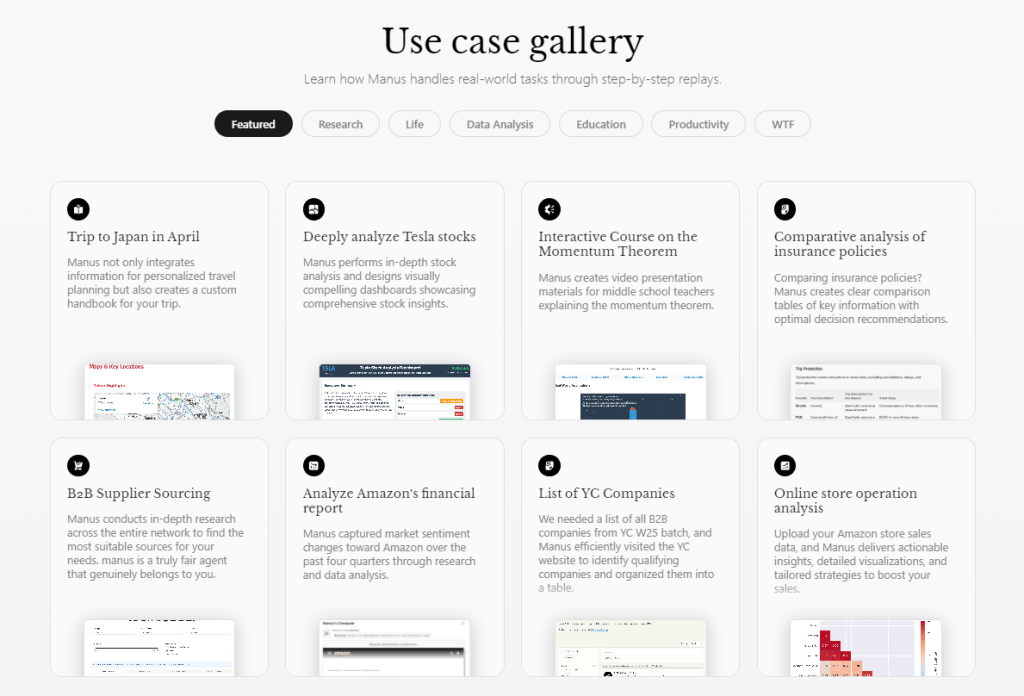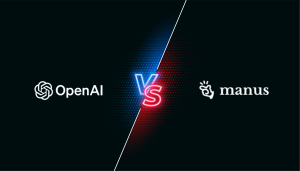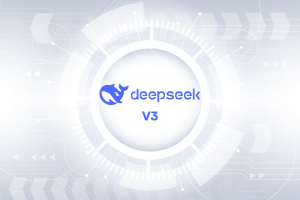Tech enthusiasts have been abuzz with news about Manus, a groundbreaking AI agent designed to think, plan, and execute tasks entirely on its own. Unlike traditional chatbots such as ChatGPT, Manus promises to move beyond text generation by autonomously handling end-to-end tasks. But does this represent a genuine technological breakthrough, or just another overhyped tool in the AI arsenal?
The Rise of Manus: What Makes It Different?
Developed by Monica.im, a Chinese startup founded by serial entrepreneur Xiao Hong, Manus isn’t just another AI assistant. Imagine asking an AI to “plan a week-long trip to Tokyo”. Manus will independently research flights, book hotels, and even draft a detailed day-by-day itinerary. In essence, it acts like a digital Swiss Army knife capable of performing complex, multi-step tasks without constant human supervision.
A brief, four-minute demonstration highlighted Manus’s versatility. The demo showed the agent’s ability to analyze stock trends, compare insurance policies, and generate educational content – all presented in visually digestible formats. Users can apparently shut down their computers in the middle of a task and let Manus work its magic in the cloud. Early testers, including tech investor Yu Yi, were impressed with its performance, noting that Manus could produce complicated financial reports in just 20 minutes without human intervention, a moment they described as a “DeepSeek moment for AI agents.”

Manus vs. GPT-4
Let’s break down how Manus stacks up against OpenAI’s flagship model:
| Feature | Manus | GPT-4 |
| Autonomy | Full task execution (planning, analysis, output) | Text generation with limited actionability |
| Benchmark Performance | Top scores on the GAIA (General AI Assistant) benchmark | Strong in language tasks, but not GAIA-focused |
| Task Execution | Operates via the cloud and can function autonomously | Requires active user interaction |
| Market Response | Beta access is exclusive; codes auctioned for $55+ | Enjoyed massive adoption since its 2022 launch |
While GPT-4 continues to shine as a language model, Manus aims to bridge the gap between idea generation and real-world action. Its GAIA benchmark scores reportedly outperform GPT tools by 13%, suggesting stronger real-world applicability.
Why the Buzz Matters?
- Economic Impact: Following Manus’s announcement, China’s AI sector saw an approximately 6% increase, with investors becoming increasingly optimistic about the future of autonomous AI agents. Some analysts even predict that the global AI agent market could reach a staggering $130 billion by 2033.
- Enhanced Productivity: Manus could redefine everyday productivity tools. Imagine delegating routine tasks – such as tax filing or extensive research – to an AI that not only schedules the work, but also completes it efficiently.
- Founder Pedigree: Xiao Hong’s track record with Monica (an AI assistant that gained traction overseas) and backing from Tencent add credibility. His ventures have consistently targeted practical AI integration.
Potential Pitfalls: Is the Hype Justified?
- Beta Limitations: Access is invite-only, and codes are scalped for $55+ on platforms like Xianyu – reminiscent of ChatGPT’s chaotic debut. Scalability remains unproven.
- Reliability Concerns: While early demos are promising, real-world performance – particularly in complex scenarios such as in-depth stock analysis – needs further validation.
- Ethical and Accountability Questions: With increased autonomy comes the challenge of accountability. For example, if Manus were to book an erroneous flight, determining liability could prove complicated.
The Verdict: Breakthrough or Hype?
Manus represents an ambitious leap forward in AI, combining creative input with autonomous execution. Whether it becomes a transformative tool, or another cautionary tale of overpromised technology, will depend on its real-world performance and scalability. One thing is certain: Manus is pushing the boundaries of what artificial intelligence can achieve, signaling that the race to redefine AI capabilities is only getting more intense.
Stay curious, stay informed, and watch as this next chapter in AI innovation unfolds.

